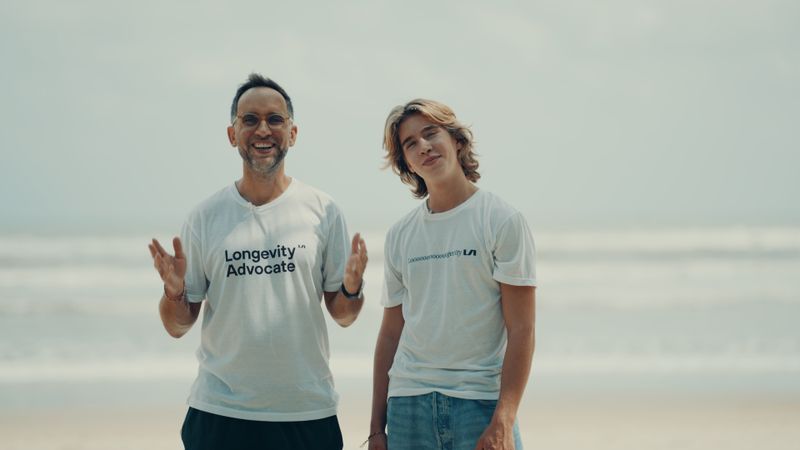Type 1 Diabetes and Exercise: Importance, Challenges, and Future Directions

A Global Trend in Diabetes Prevalence
Diabetes is a growing global health challenge. According to the latest International Diabetes Federation statistics, approximately 589 million people worldwide are currently living with diabetes, a number projected to rise to 853 million by 2050. Diabetes manifests in several forms, with type 1 and type 2 being the most prevalent. Type 2 diabetes accounts for about 90% of all cases, half of which are managed with medications that carry a risk of hypoglycaemia, primarily insulin. Type 1 diabetes, affecting an estimated 9 million individuals globally, is the most common endocrine condition among children and young adults.
What is Type 1 Diabetes and what does it mean for those living with the condition?
Type 1 diabetes is a chronic autoimmune condition that targets and destroys the β-cells in the pancreas, which are responsible for producing insulin. Insulin is crucial for regulating blood glucose levels, and without it, the body struggles to manage glucose effectively.
For those living with type 1 diabetes, managing blood glucose levels is a daily challenge. The goal is to spend as much time as possible within a safe target range, typically between 3.9 and 10 mmol/L (70 and 180 mg/dL). Straying outside this range can have serious health implications, making constant vigilance a necessity. This involves a complex interplay of diet, activity, and medication to maintain a healthy, active life.
Living with type 1 diabetes is a 24/7 challenge, with no breaks or days off. It has been estimated that someone living with type 1 diabetes must navigate an additional 200 decisions every single day, from counting carbs and insulin dosing to checking glucose levels. The relentless demands can be overwhelming, significantly impacting quality of life. Beyond daily management, there is an ever-present concern about potential complications such as vision impairment, nerve damage, kidney failure, and an increased risk of heart attacks. These challenges affect both physical health and mental well-being.
Why Physical Activity and Exercise are Important for People with Type 1 Diabetes
Physical activity plays a pivotal role in diabetes care. It aids in weight management, lowers blood glucose levels, and improves insulin sensitivity. Regular exercise also reduces the risk of cardiovascular disease and offers numerous psychological benefits. A proactive approach enhances well-being and is cost-effective for public health systems by reducing long-term treatment costs and diabetes-related complications.
The World Health Organization recommends that people with diabetes engage in 150-300 minutes of moderate or 75-150 minutes of vigorous physical activity per week. Unfortunately, many struggle to meet these guidelines, often due to motivational challenges, logistical difficulties, and limited support. For those on insulin therapy, fear of hypoglycaemia (dangerously low blood glucose levels) and the complexity of managing glucose levels around exercise present additional barriers.
A (very) brief overview of the Effect of exercise on blood glucose in type 1 diabetes
Exercise can lower or raise blood glucose levels. During exercise, blood glucose can decrease due to muscles using glucose as energy and increased insulin sensitivity. However, blood glucose can also increase due to the release of other hormones such as adrenaline. Everyone's diabetes is different, and individuals react differently to exercise. It is crucial for people with diabetes to understand how their blood glucose responds to exercise to manage these fluctuations and prevent hypoglycaemia or hyperglycaemia. Exercise must always be prepared for in advance, and insulin or food adjustments might be needed to stay within the optimal blood glucose range.
But exercising with diabetes is possible with the right level of support.
Managing diabetes and maintaining an active lifestyle is achievable. In my career to date, I’ve had the incredible opportunity to work with elite and professional athletes living with type 1 diabetes across a variety of sports. I’ve also completed doctoral and postdoctoral research focused on helping people with diabetes exercise safely and effectively.
Key Considerations Before and During Your Workout
Here are some key aspects of glucose management before and during exercise:
- Starting Blood Glucose Concentration: Check your glucose levels before exercising and understand how to interpret and act on these levels.
- Exercise Modality: Consider the type, intensity, and duration of exercise.
- Managing Insulin on Board (IOB): Make insulin adjustments as needed and account for insulin already delivered and active in your system.
- Nutritional Considerations: Understand the impact of consuming carbohydrates and other macronutrients before and during exercise.
- Timing of Exercise: Consider the time of day you exercise and how it relates to the timing of meals.
- Impact of Previous Events or Activities: Consider any recent exercise or episodes of hypoglycaemia.
- Technology: Tools for monitoring blood glucose levels and managing insulin delivery.
Exercising Under variable or Challenging Conditions for the Athlete with Type 1 Diabetes
Sport can be unpredictable. Factors such as competition stress or changes in environmental conditions can significantly impact glucose management. Even if you are not a competitive athlete, numerous scenarios can dramatically affect your glucose levels or require additional considerations. These may include changes in altitude or temperature during winter sports, variables related to playing recreational sports, or scuba diving while on holiday. When exercise conditions vary, it is essential to be strategic and consider specific factors to manage glucose levels effectively.
Pre-Competition Stress and Hyperglycaemia-Related Anxiety
Athletes often experience stress or anxiety before a competitive event, which, for those living with type 1 diabetes, can significantly impact blood glucose levels. Stress hormones such as adrenaline and noradrenaline trigger a significant increase in glucose levels. In response, athletes might adjust their insulin management or avoid carbohydrates, fearing a further rise in glucose levels. This can backfire, resulting in insufficient fuel consumption during the event and potentially impairing performance.
Competition stress remains understudied and underreported, but it is crucial for athletes to monitor how glucose levels respond to specific stressful situations. Developing a pre-competition strategy tailored to individual needs, including meal timing, insulin management, and starting blood glucose levels, is essential. Sports psychology support can also help reduce stress and prepare the athlete mentally for the event.
Exercising in High Temperatures
In high temperatures, insulin absorption from the injection site may speed up due to the dilation of blood vessels, enhancing blood flow to the skin and extremities for heat dissipation. This increased absorption rate can lead to a more rapid onset of insulin action, elevating the risk of hypoglycaemia. At the same time, the body's demand for glucose may increase due to the increased energy requirements for thermoregulation and the intensified metabolic rate during exercise. These factors make it challenging for individuals with type 1 diabetes to predict their blood glucose response to exercise in hot environments, underscoring the need for vigilant glucose monitoring and proactive management strategies.
Exercising at Altitude
The reduced oxygen levels at altitude can impair physical performance and alter the body's response to insulin, making blood glucose management more complex. The initial stress of high altitude can activate the sympathetic system and trigger the release of counterregulatory hormones, leading to hyperglycaemia. Conversely, after some time at high altitude, the risk of hypoglycaemia increases due to hypoxia-induced enhanced insulin sensitivity with potentially increased glucose uptake by muscles. Additionally, the symptoms of altitude sickness can mimic or mask those of hypoglycaemia, making it difficult to distinguish between the two. Therefore, people with type 1 diabetes must be vigilant in monitoring their blood glucose levels, adjusting insulin doses accordingly, and staying hydrated while exercising at high altitudes.
Exercising in Cold Temperatures
Cold temperatures can slow down insulin absorption from the injection site due to vasoconstriction, which reduces blood flow to the skin and subcutaneous tissue, leading to a delayed onset of insulin action and increasing the risk of hyperglycaemia during exercise. Cold temperatures can also affect the functionality of insulin pumps and continuous glucose monitors (CGMs), potentially leading to device malfunctions or inaccurate readings.
The Future of Diabetes Management and Sport
Digital wearables, such as exercise trackers, hold great potential for enhancing physical activity adoption and improving diabetes care when integrated with diabetes technology. By offering real-time activity data, boosting motivation, and facilitating informed decision-making around exercise and glucose levels, these tools may empower individuals to increase physical activity levels. As the field continues to evolve, addressing current challenges and establishing a robust evidence base will be crucial to maximizing the benefits of these innovative technologies.
By leveraging AI technology and clinical expertise, new tech may empower users to optimise their health and performance, achieving remarkable results. AI-powered platforms have the potential to revolutionise how people with chronic conditions manage their health. By providing personalised, accessible guidance, these platforms empower individuals to take control of their health and achieve their goals.
References
Author: Sam Scott
Sam Scott is the CEO and Co-Founder of Enhance-d, which helps people with diabetes exercise by providing guidance, coaching and community. Sam has a PhD in Exercise Physiology with clinical and applied research experience in the field of obesity, diabetes, and continuous glucose monitoring technology. As an academic, his primary research focus has been on developing strategies to overcome the major barriers to exercise for people living with diabetes.




